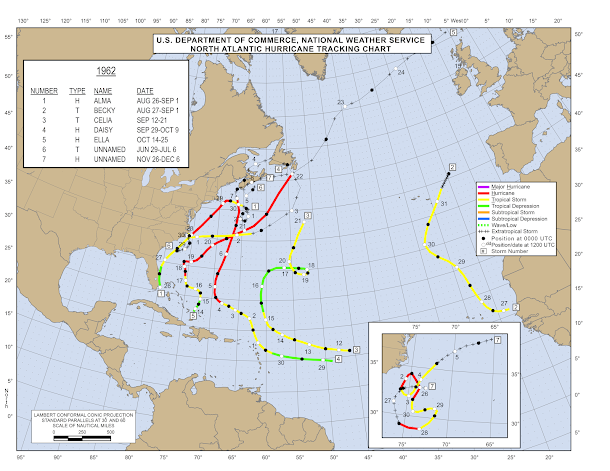Good Afternoon!
Finding two weather pattern years that truly align is no easy task—but it's a fun and useful exercise when it comes to understanding the big picture, especially as we prepare for hurricane season. I enjoy looking back at previous years that had similar conditions to what we’re seeing now. Here’s what I’ve found in comparing the current setup to the past:
🔍 Climate Indicators: Where We Stand
-
AMO & PDO (as of May 2025):
We’re currently in a positive (warm) Atlantic Multidecadal Oscillation (AMO) and a cold Pacific Decadal Oscillation (PDO). This combination can have important implications for hurricane activity in the Atlantic. -
ENSO (El Niño–Southern Oscillation):
We’re coming off a rare three-year La Niña, followed by a brief weak El Niño. Now, we’re back in a neutral phase—but leaning slightly cold. It’s not cold enough to classify as a La Niña, but the ENSO index is still in the negative range compared to average.
📅 A Historical Match? Let’s Talk 1962
Interestingly, the ENSO pattern from 1959–1962 has some strong similarities to now. Back then, we came off a moderate El Niño, then shifted into cold-neutral conditions for 2–3 years—a long duration! In 1963, it flipped back to El Niño.
Looking specifically at 1962, we see even more parallels:
-
7 named storms
-
4 hurricanes
-
Most systems remained in the Atlantic and steered away from the Gulf
-
Minimal landfalls and limited impact
And here’s a fun fact—there was even a storm as late as November that year!
🤔 So, Why Are Forecasts Calling for 13–19 Named Storms?
Given the similarities between 1962 and 2025 (so far), you might wonder why NOAA is forecasting an above-average hurricane season. While AMO, PDO, and ENSO are critical pieces of the puzzle, other factors—like Atlantic water temperatures, wind shear, Saharan dust, and vertical instability—also come into play.
The Atlantic is currently running very warm, and those warm waters can fuel more storms, even if other signals are neutral or weak.
📌 Final Thoughts
I’m excited to keep diving into the similarities between now and 1962. It’s fascinating to compare the patterns and think critically about what’s ahead. Stay tuned—I'll continue to explore what other ingredients may have shaped that quieter 1962 season and whether they might reappear in 2025.





















.PNG)









